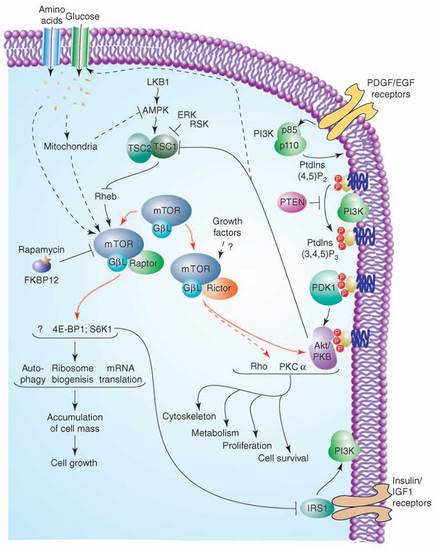
Figure 57. A model of the mTOR and PI3K/Akt signaling pathways and their interconnections. Two mTOR-interacting proteins, raptor and rictor, define distinct branches of the mTOR pathway. The raptor–mTOR pathway regulates cell growth (accumulation of cell mass) through S6K1 and 4E-BP1 as well as unknown effectors. It responds to nutrients and growth factors in part through the upstream regulators TSC1/2 and rheb. The rapamycin-insensitive rictor–mTOR pathway regulates Akt/PKB, PKCa, Rho/Rac to control cell survival, proliferation, metabolism and the cytoskeleton. The binding of growth factors to cell surface receptors activates PI3K to generate PtdIns P3 and recruits the PDK1 kinase and Akt/PKB to the plasma membrane. Akt/PKB is activated by its phosphorylation on two different sites. The rictor–mTOR complex phosphorylates Akt/PKB on Ser473 in the hydrophobic motif which may facilitate the phosphorylation by PDK1 of the activation loop of Akt/PKB on Thr308. How the rictor–mTOR complex is regulated is unknown. Dashed lines indicate interactions that are likely not direct.(152).
